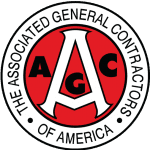In the ever-evolving landscape of commercial transportation, fleet owners are continually seeking ways to enhance the efficiency, functionality, and safety of their vehicles. One effective strategy that has gained significant traction in recent years is truck upfitting. This process involves customizing and modifying trucks to better suit specific operational needs, ultimately improving performance and productivity. Whether you manage a small fleet or oversee a large operation, understanding the nuances of truck upfitting can be pivotal in maximizing your investment and ensuring that your vehicles are equipped to handle the demands of your business.
In this comprehensive guide, we will delve into the various aspects of truck upfitting, exploring its benefits, common modifications, and considerations for fleet owners. From selecting the right equipment to understanding regulatory compliance, our aim is to provide you with valuable insights that will empower you to make informed decisions about your fleet’s customization needs. Join us as we navigate the world of truck upfitting and discover how it can transform your fleet into a more efficient and effective asset for your business.
1. Understanding Truck Upfitting: An Introduction for Fleet Owners
Truck upfitting is the process of customizing a standard vehicle to fit specific business needs. For fleet managers, upfitting trucks is a crucial aspect of optimizing their fleet for efficiency and safety. This can involve adding specialized equipment, modifying the interior or exterior, or installing technology to enhance the vehicle’s functionality.
Whether it’s for construction, delivery, utilities, or any other industry, upfitting allows fleet owners to tailor their trucks to meet the unique demands of their operations. They must understand that upfitting goes beyond simply adding accessories to a truck. It involves a strategic approach to ensure that the upfitted vehicles align with the company’s goals and comply with industry regulations.
Additionally, considering the long-term impact on maintenance, fuel efficiency, and driver productivity is essential. By comprehensively understanding the concept of truck upfitting, fleet owners can make informed decisions that positively impact their operations.
2. Key Considerations for Fleet Owners When Upfitting Trucks
When it comes to upfitting trucks, fleet managers need to consider several key factors to ensure the success of the process. Firstly, understanding the specific operational requirements is crucial. This involves analyzing the tasks the trucks will be performing, the terrain they will be navigating, and the environmental conditions they will encounter.
For example, a utility fleet may require upfits such as ladder racks and specialized storage compartments, while a delivery fleet may need refrigeration units or liftgates. Secondly, compliance with safety regulations and industry standards is paramount. Fleet owners must ensure that the upfitting modifications adhere to relevant safety guidelines and do not compromise the structural integrity of the vehicles.
Also, considering the impact on driver ergonomics and comfort is essential for promoting productivity and reducing the risk of injuries. Evaluating the total cost of ownership, including initial investment, maintenance, and potential resale value, is critical in making financially sound upfitting decisions. By carefully addressing these considerations, fleet managers can effectively plan and execute truck upfitting projects that align with their operational needs and budgetary constraints.
3. The Process of Truck Upfitting: From Design to Installation
The process of truck upfitting involves several stages, starting with the design phase. During this stage, fleet owners collaborate with upfitting specialists to conceptualize the modifications required for their trucks. This may involve creating custom storage solutions, integrating specialized equipment, or redesigning the vehicle’s layout to optimize functionality.
Once the design is finalized, the next step is procurement and fabrication. This involves sourcing the necessary components and materials for the upfitting project. Whether it’s installing shelving systems, adding lighting fixtures, or incorporating advanced technology, the fabrication phase is where the customized elements are constructed or assembled according to the design specifications.
Following fabrication, the installation phase takes place. Skilled technicians carry out the installation of upfitting components, ensuring that each modification is seamlessly integrated into the vehicle. This phase demands precision and expertise to guarantee that the upfitted trucks meet performance standards and safety requirements.
Finally, quality assurance and testing are conducted to validate the functionality and durability of the upfitting modifications. This comprehensive process ensures that the upfitted trucks are ready to deliver optimal performance in line with the fleet manager’s objectives.
4. Choosing the Right Upfitting Solutions for Your Fleet
Selecting the right upfitting solutions for a fleet requires a thorough assessment of various factors. Fleet managers should consider the reliability and reputation of upfitting providers, ensuring that they have a track record of delivering high-quality modifications that align with industry standards. Additionally, evaluating the compatibility of upfitting solutions with existing fleet management systems and technologies is crucial for seamless integration and data management.
Furthermore, considering the potential for future scalability and adaptability is essential. Upfitting solutions should not only address current operational needs but also accommodate potential growth or changes in business requirements. Whether it’s modular upfitting components or adaptable designs, choosing solutions that offer flexibility can contribute to long-term cost savings and operational efficiency.
Moreover, assessing the warranty and support offered by upfitting providers is vital for mitigating risks and ensuring ongoing maintenance and serviceability. By carefully evaluating these factors, fleet managers can make informed decisions when selecting upfitting solutions that best suit their fleet’s requirements.
5. Maximizing Efficiency and Safety Through Truck Upfitting
Truck upfitting plays a pivotal role in maximizing efficiency and safety within a fleet. By customizing vehicles to streamline workflows and accommodate specialized equipment, fleet managers can optimize operational processes and enhance productivity. For instance, upfits such as custom shelving systems or compartmentalized storage solutions can improve organization and accessibility for tools and materials, reducing downtime and enhancing workflow efficiency.
Moreover, integrating safety features such as backup cameras, collision avoidance systems, or ergonomic enhancements can significantly reduce the risk of accidents and injuries for drivers. These safety-focused upfits not only prioritize driver well-being but also contribute to minimizing insurance costs and liability concerns for fleet operations. Additionally, leveraging advanced technology through upfitting solutions, such as telematics systems or GPS tracking devices, enables fleet owners to gather valuable data for performance monitoring, route optimization, and preventive maintenance scheduling.
Optimize Your Fleet Today: Get Started with Professional Truck Upfitting
In conclusion, truck upfitting is an essential aspect of optimizing commercial vehicles for specific operational needs. At ML Utilities, we understand the importance of tailoring each vehicle to meet the unique demands of your business. Our comprehensive range of services in Tennessee includes everything from transfers and rebuilds to custom solutions designed with meticulous attention to detail.
By choosing ML Utilities for your truck upfitting and specialized repair needs, you are partnering with a team dedicated to delivering quality and reliability. We pride ourselves on our ability to transform standard vehicles into specialized tools that can handle the rigors of your industry. If you’re ready to enhance your fleet’s capabilities or need expert assistance with repairs, we invite you to Contact us today. Let us help you take your commercial vehicles to the next level with our professional upfitting services.




